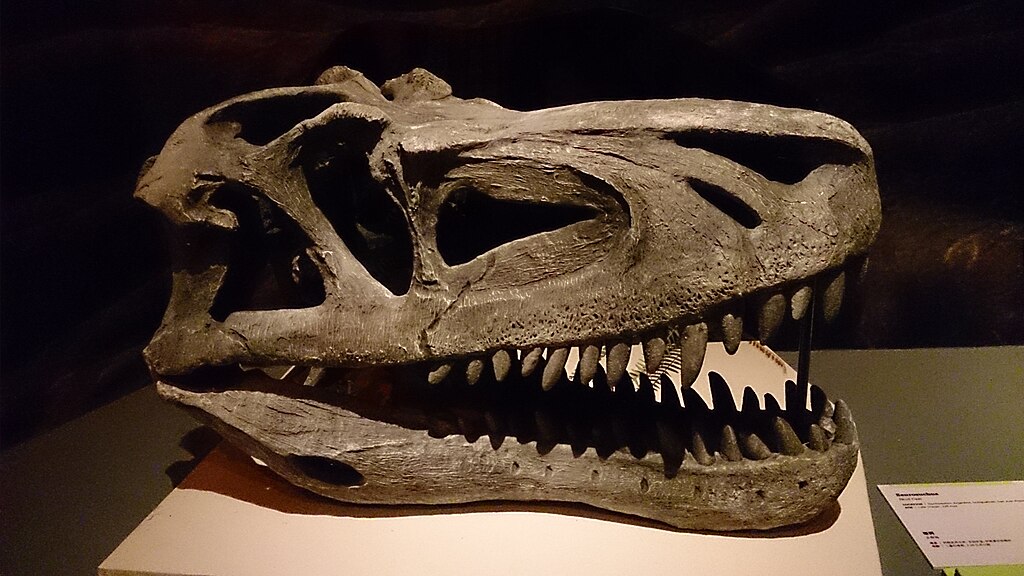Dinosaurs, the magnificent creatures that dominated Earth for over 160 million years, have long captured our imagination. While popular media often portrays them as solitary hunters or mindless beasts, paleontological evidence increasingly suggests that many dinosaur species exhibited complex social behaviors, particularly herding. Through careful analysis of fossils, trackways, nesting sites, and comparative studies with modern animals, scientists have pieced together fascinating insights into dinosaur social structures. This article explores what we currently know about dinosaur herd behavior, how this knowledge has evolved over time, and what it tells us about these remarkable prehistoric animals.
The Fossil Evidence for Herding
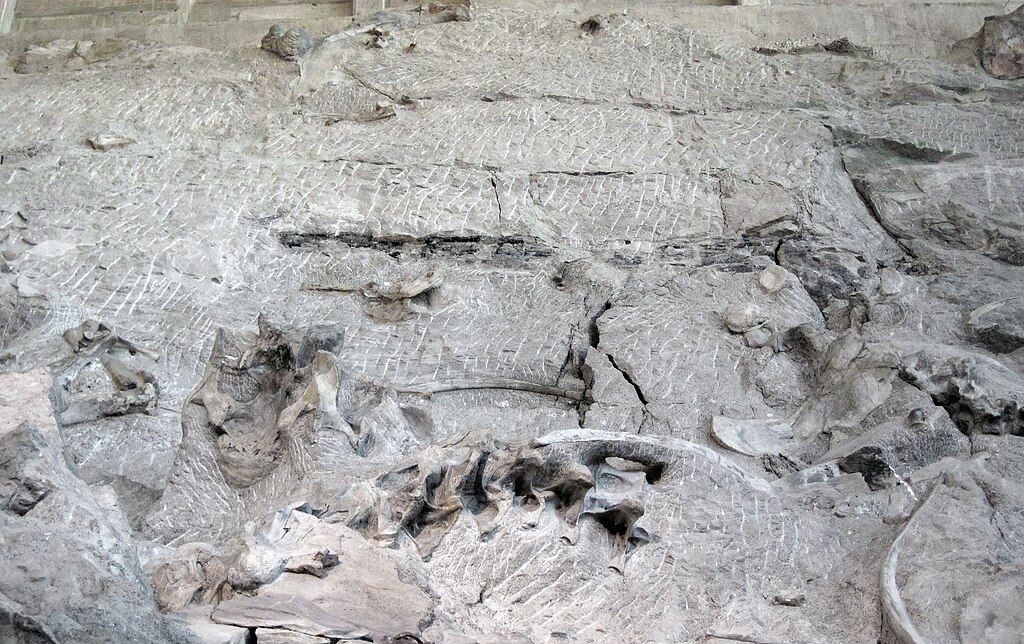
Fossil evidence provides our most direct window into dinosaur herding behavior. Mass bone beds, where numerous individuals of the same species are found together, offer compelling evidence for gregarious behavior. One of the most famous examples is the Centrosaurus bone bed in Dinosaur Provincial Park, Alberta, which contains thousands of individuals that appear to have died together in a flooding event. Similarly, the “Dragon’s Tomb” in Mongolia preserves multiple Protoceratops individuals in close proximity. These mass death assemblages strongly suggest these animals lived together in groups. Taphonomic analysis (the study of how organisms decay and become fossilized) helps paleontologists distinguish between animals that died together as a social unit versus those that were simply swept together after death, strengthening our understanding of which species truly exhibited herding behavior.
Trackway Evidence: Footprints Tell a Story

Dinosaur trackways offer remarkable glimpses into behavior that fossilized bones alone cannot provide. Multiple parallel trackways of the same species traveling in the same direction provide some of the most convincing evidence for herding. In the western United States, extensive hadrosaur trackways show dozens of individuals moving together, maintaining consistent spacing and direction over considerable distances. The most impressive evidence comes from a site in Bolivia, where over 5,000 footprints representing at least 300 individual sauropods demonstrate coordinated movement. Crucially, these trackways often show different-sized footprints intermingled, suggesting family groups with adults and juveniles traveling together. Some trackways even narrow at certain points and then widen again, mimicking the compression and expansion patterns seen in modern herding animals navigating terrain features.
Nesting Colonies and Parental Care

The discovery of extensive dinosaur nesting grounds has revolutionized our understanding of dinosaur social behavior. Sites like “Egg Mountain” in Montana have revealed hundreds of Maiasaura nests in close proximity, strongly suggesting colonial nesting behavior similar to modern seabirds. These nests contain evidence that parents provided care to their young, including worn teeth in adult specimens consistent with gathering food for nestlings. The arrangement of nests in these colonies often shows regular spacing, suggesting territorial boundaries within a larger social structure. Particularly compelling are the massive sauropod nesting grounds in Argentina, where hundreds of titanosaur nests have been discovered in distinct layers, indicating that the same locations were used repeatedly over generations. This site fidelity and colonial nesting strongly suggest complex social interactions and possibly coordinated breeding seasons among dinosaur populations.
Age Segregation in Dinosaur Herds
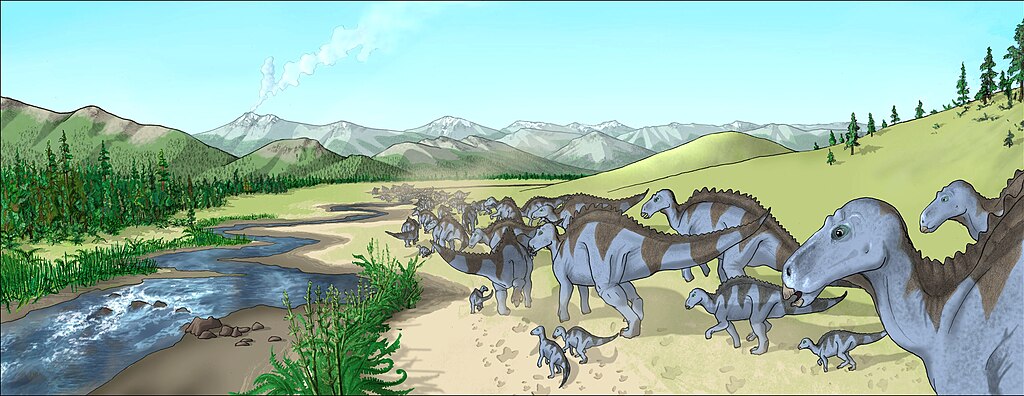
Fascinating evidence suggests some dinosaur species practiced age segregation within their social structures. The most compelling example comes from Centrosaurus and Albertosaurus bone beds, where excavations have revealed assemblages composed almost entirely of juveniles or subadults of similar age. This pattern mirrors behavior seen in many modern animals, where adolescents form “teenager” groups separate from adults. Such age segregation may have served multiple purposes, including specialized feeding requirements for growing individuals or protection from cannibalistic adults. The famous Cleveland-Lloyd Dinosaur Quarry, dominated by Allosaurus remains, shows an unusual preponderance of juvenile and subadult individuals, potentially representing a predator trap that specifically attracted younger, less experienced animals traveling together. These age-structured assemblages provide insights into the complex social dynamics that may have existed within dinosaur societies throughout their life cycles.
Differences Between Herbivore and Carnivore Social Structures

The fossil record suggests fundamental differences between herbivorous and carnivorous dinosaur social behaviors. Herbivorous dinosaurs consistently show stronger evidence for herding, with numerous examples of mass death assemblages, colonial nesting, and parallel trackways. This pattern makes ecological sense, as herding provides safety in numbers against predators, much as we see in modern herbivores like wildebeest or buffalo. In contrast, evidence for social behavior in large theropods (carnivorous dinosaurs) is more limited and contentious. While some sites like the Mapusaurus bone bed in Argentina suggest possible pack behavior in some large carnivores, these assemblages are significantly rarer than herbivore groups. Interestingly, smaller carnivorous dinosaurs like Deinonychus show stronger evidence for social behavior, with multiple individuals found associated with single prey animals. This pattern mirrors modern ecosystems, where large apex predators like tigers tend to be solitary, while medium-sized predators like wolves often hunt in coordinated packs.
Dinosaur Migration Patterns
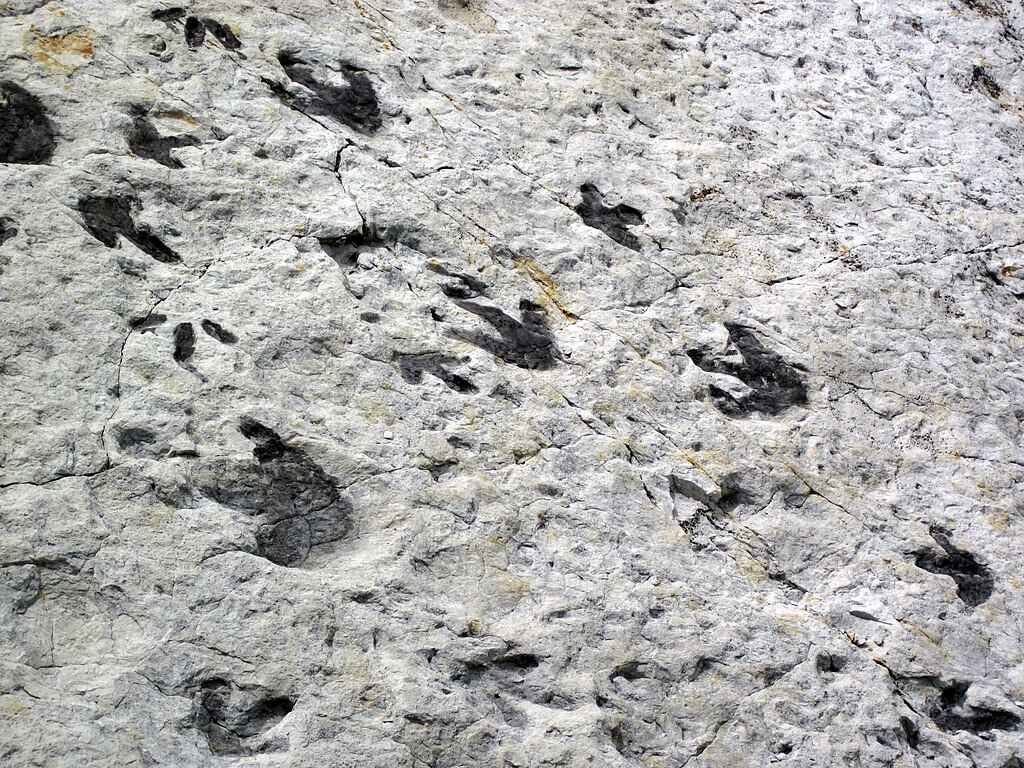
Growing evidence suggests some dinosaur herds undertook seasonal migrations, similar to many modern large mammals. Isotopic studies of teeth from hadrosaurs and ceratopsians show chemical signatures consistent with movement between different feeding grounds throughout the year. Particularly compelling evidence comes from Alaska’s North Slope, where dinosaur fossils have been found well within what would have been the Arctic Circle during the Cretaceous period. While still warm by modern Arctic standards, these regions would have experienced months of darkness, suggesting dinosaurs either adapted to polar conditions or migrated seasonally. The orientation of massive trackway assemblages across ancient landscapes further supports the idea of directional, purposeful movement of large groups. Some sauropod trackways extend for kilometers in consistent directions, suggesting organized movement of herds across vast distances, potentially following seasonal resources or breeding grounds.
Communication Within Dinosaur Herds
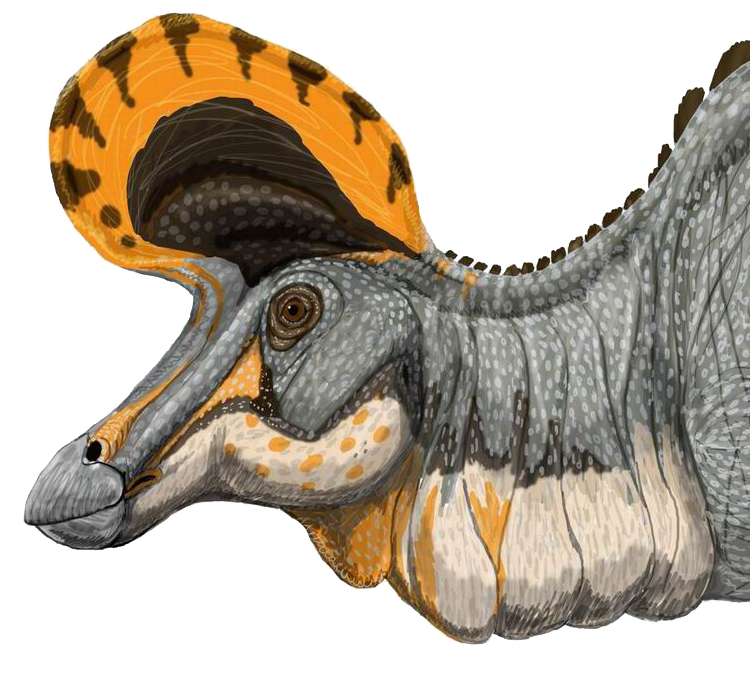
Coordinated group behavior would have required effective communication between herd members, raising fascinating questions about how dinosaurs interacted. Cranial anatomy provides important clues, with many social dinosaur species possessing elaborate crests, frills, and chambers that likely served acoustic functions. The hollow crests of lambeosaurine hadrosaurs like Parasaurolophus could have produced resonant calls audible over great distances, potentially allowing herds to maintain contact across expansive landscapes. Visual communication was likely equally important, with the elaborate horns, frills, and spikes of ceratopsians potentially serving as visual identifiers for species and possibly individuals within herds. Modern computer modeling of these structures increasingly supports their role in social signaling rather than purely defensive functions. Some dinosaurs also show evidence of intricate color patterns preserved in exceptional fossils, which may have aided in visual communication, species recognition, and potentially even establishment of social hierarchies within herds.
Evolutionary Advantages of Herding
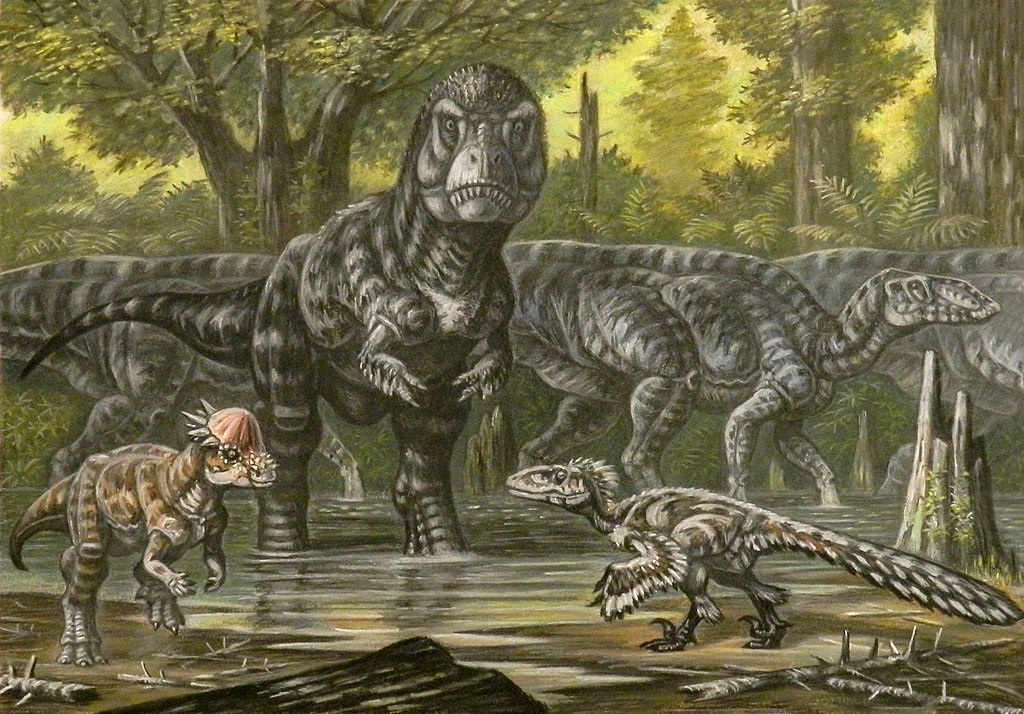
Herding behavior offers numerous evolutionary advantages that help explain its prevalence among dinosaur species. Most fundamentally, herds provide protection from predators through multiple mechanisms: increased vigilance (more eyes watching for danger), dilution effect (reducing each individual’s chance of being targeted), and confusion effect (making it difficult for predators to target any specific individual). For herbivorous dinosaurs constantly at risk from large theropods, these benefits would have been substantial. Herding also facilitates finding and exploiting food resources, as successful feeding by some individuals directs others to productive areas. This would have been particularly valuable for dinosaurs in seasonally variable environments. Additionally, herds provide efficient contexts for finding mates and transferring social knowledge between generations. The repeated evolution of herding behavior across multiple dinosaur lineages suggests these advantages consistently outweighed the costs of competition for resources within the group.
Case Study: Sauropod Herding Behavior

Sauropods—the long-necked giants that were Earth’s largest land animals—present a fascinating case study in dinosaur social behavior. Contrary to early assumptions that such massive animals must have been solitary, multiple lines of evidence now support herding behavior in many sauropod species. The most direct evidence comes from trackways, with sites in Portugal, Spain, and Bolivia showing dozens of individuals moving in the same direction while maintaining consistent spacing. The age distribution in some sauropod bone beds reveals mixed-age assemblages with adults and juveniles together, suggesting family groups similar to modern elephants. Nesting colonies discovered in Argentina and India show hundreds of nests in close proximity, indicating colonial breeding behavior. Computer modeling of sauropod biomechanics suggests herding would have been energetically advantageous, as following individuals could benefit from reduced air or water resistance when moving behind leaders. This convergence of evidence strongly indicates that even Earth’s largest dinosaurs benefited from social living.
Case Study: Hadrosaur Social Complexity

Hadrosaurs (duck-billed dinosaurs) provide our most complete picture of complex dinosaur social structures. These successful Late Cretaceous herbivores left abundant fossil evidence of sophisticated social behaviors. The Maiasaura (“good mother lizard”) nesting grounds in Montana reveal hundreds of nests in distinct “neighborhoods,” with evidence that adults provided extended care to nestlings that remained in the nest for significant periods after hatching. Growth studies of hadrosaur bones show rapid early development, suggesting intensive parental care and protection. Massive hadrosaur bone beds containing thousands of individuals, like those of Edmontosaurus in Wyoming and Alberta, indicate these animals formed enormous herds comparable to the largest modern ungulate aggregations. Intriguingly, different hadrosaur species often had distinctive cranial crests that varied dramatically between species but remained consistent within species, suggesting these structures played important roles in species recognition and potentially complex social signaling. The remarkable success of hadrosaurs in Late Cretaceous ecosystems worldwide may be partially attributed to these sophisticated social adaptations.
Comparing Dinosaur Herds to Modern Animals
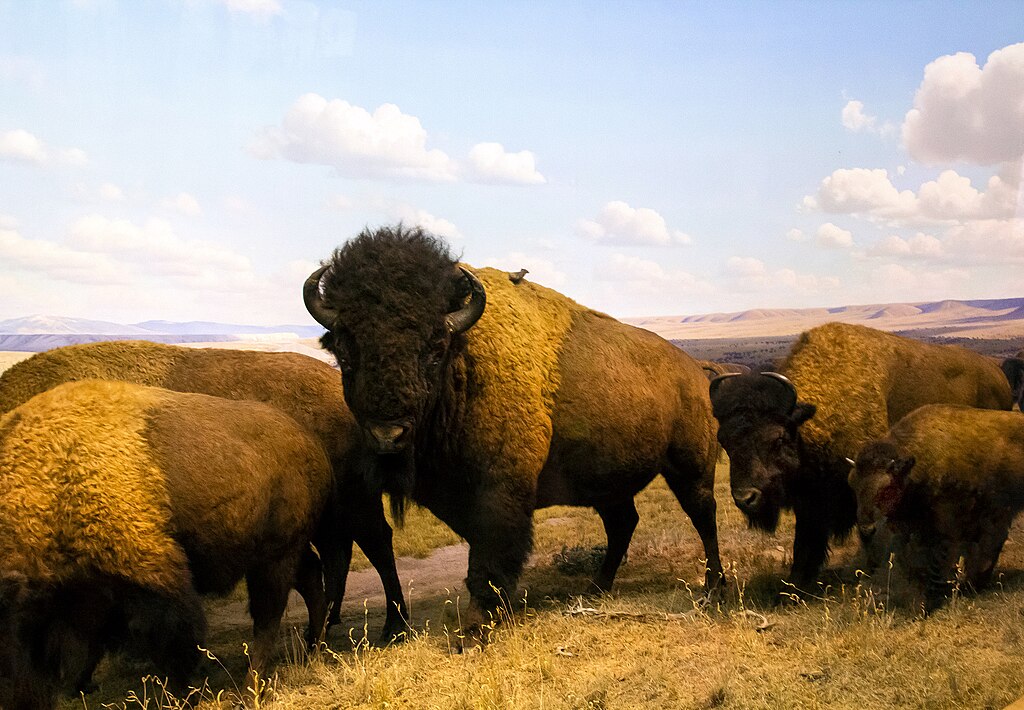
Comparing dinosaur social behaviors to those of modern animals provides valuable context for interpreting the fossil evidence. The massive mixed-age herds of ceratopsians and hadrosaurs appear analogous to modern ungulate herds like wildebeest or bison, which aggregate for protection and resource exploitation. The apparently complex parental care exhibited by some dinosaurs parallels behaviors seen in modern birds and crocodilians (dinosaurs’ closest living relatives). Sauropod herding behavior has been compared to that of elephants, which form matriarchal family groups that sometimes aggregate into larger temporary herds. The age segregation observed in some dinosaur assemblages finds parallels in modern animals like elephant seals and many ungulates, where immature individuals form separate “bachelor herds.” Evidence for elaborate visual and acoustic signaling in dinosaurs resembles communication systems in modern birds and mammals. These comparative approaches help fill gaps in the fossil record by suggesting behavioral patterns that may not be preserved directly but are consistent with the anatomical and ecological evidence we do have.
Challenges in Interpreting Dinosaur Social Behavior
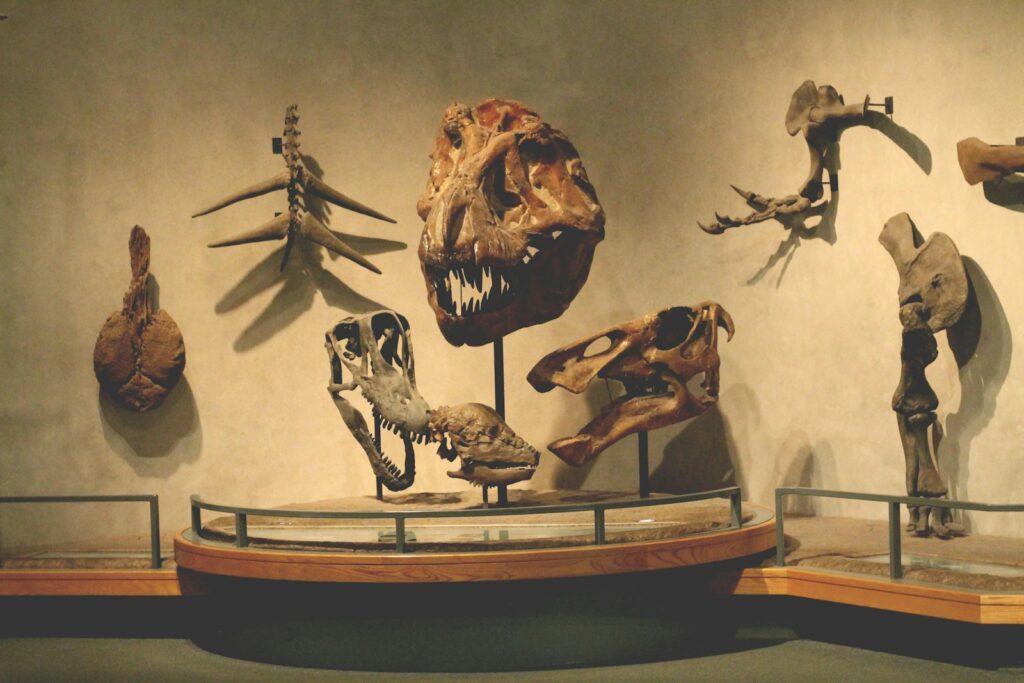
Despite growing evidence, interpreting dinosaur social behavior presents significant challenges that require careful scientific consideration. Taphonomic processes—how animals are preserved as fossils—can create false impressions of social grouping when individuals died separately but were transported together by water or other forces. Environmental catastrophes like floods or volcanic eruptions can kill multiple animals simultaneously without indicating that they lived as a social group. Time averaging in fossil deposits can compress events that occurred over hundreds or thousands of years into a single layer, potentially suggesting contemporaneous behavior that wasn’t actually synchronized. Additionally, while we can observe the results of behavior in fossils, the motivations and mechanisms remain speculative. Claims about complex behaviors require multiple, independent lines of evidence before gaining scientific acceptance. Recent advances in computational modeling, comparative biology, and geochemical analysis are helping overcome these challenges, allowing more confident interpretations of dinosaur social behavior from the necessarily incomplete fossil record.
Future Directions in Understanding Dinosaur Sociality

The study of dinosaur social behavior continues to advance through innovative research approaches. New technologies like ground-penetrating radar and LIDAR are revealing previously undetected trackway sites, expanding our understanding of movement patterns. Advanced isotopic and histological analyses of fossil teeth and bones provide insights into migration, growth patterns, and potential social stress markers. Computer modeling of biomechanics helps test hypotheses about the advantages of group living for different dinosaur body types. Evolutionary developmental biology (evo-devo) studies comparing dinosaurs with their living relatives (birds and crocodilians) help identify genetic and developmental bases for social behaviors that might have been shared across these groups. The continuing discovery of exceptionally preserved fossils with soft tissues, particularly from sites in China, offers unprecedented details about sensory capabilities that would have influenced social interactions. Perhaps most excitingly, the increasing application of artificial intelligence to analyze complex patterns in fossil data promises to reveal subtle signals of behavior that might otherwise remain undetected by human researchers.
Conclusion

The evidence for herding and other social behaviors in many dinosaur species has grown increasingly compelling. From massive bone beds and extensive trackways to colonial nesting sites and age-segregated groupings, multiple lines of evidence converge to paint a picture of dinosaurs as socially complex creatures. While interpretive challenges remain, modern research techniques continue to reveal new insights into how these remarkable animals lived and interacted. Far from the solitary, primitive creatures once imagined, dinosaurs appear to have developed sophisticated social adaptations that contributed to their evolutionary success across millions of years. By understanding dinosaur sociality, we gain not only a clearer picture of prehistoric ecosystems but also deeper insights into the evolution of complex social behavior among vertebrates, including the lineage that eventually led to ourselves.


